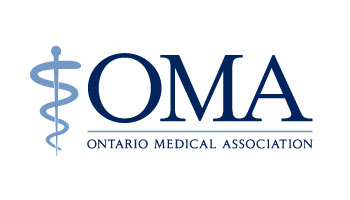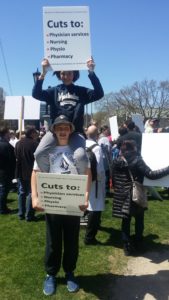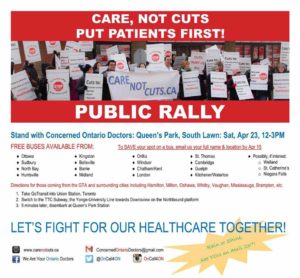 We all have something in our family that we never mention. Every family has skeletons. Yet, we work to promote our best family face.
We all have something in our family that we never mention. Every family has skeletons. Yet, we work to promote our best family face.
We talk about our children’s accomplishments and awards. We want people to know the best about who we are. We cringe if someone asks about our struggles.
“All happy families are alike; each unhappy family is unhappy in its own way.”
― Leo Tolstoy, Anna Karenina.
Every doctor in Ontario has a family name. Our family name is the OMA. The Ontario Medical Association is only as smart and witty and compassionate as those of us who get involved.
If doctors want the OMA to look or behave differently, then doctors have to help to make that change.
It’s Your Family
If we hate how our family behaves, or what people think of our family, we work to change the impression. We spend time improving behaviour and reputation. We work with other people in our family to make things better. We never publicly criticize our family.
But that does not mean we fawn and gush over our family, either.
We courageously admit when things are hard. We accept when our family stumbles and disappoints, or even embarrasses us. But we never disown our family. We own our family’s failure just as we own its success.
Believe in the OMA
Doctors have tremendous power, tremendous opportunity, with the OMA. It is our organization, our family. Any doctor can stand for election and get ‘inside’ the political structure. Anyone can influence change from within.
The OMA stands unique in that it unites doctors around the one thing that doctors hold in common: caring for patients.
The founders of the OMA gave power to working doctors. They invested authority in a group of 250 working doctors at council. Council members direct the board to do the daily work of the OMA. They hold the board to account. If the board disappoints members, then members vote them out.
Over the years, many groups have tried to improve the OMA from the outside. The Coalition of Family Practice campaigned against the OMA in the 1990s. Eventually, they infiltrated and got 8 members elected to the board.
They overhauled how the OMA looked and behaved in the early days of primary care reform.
Today we have new groups: Ontario Doctors for Justice, Concerned Ontario Doctors, and others. These groups inject passion into the OMA.
They serve a valuable purpose. Members from grassroots organization run for office and transfuse enthusiasm and energy in a crisis. They work to renew and transform our organization.
Flawed, Like All of Us
The OMA is like any other human invention: flawed. But it is the best that doctors have. The OMA offers the best opportunity to create change in Ontario. It provides the most organized, funded, and powerful voice in medical politics.
If you want to be at the centre of medical politics, you MUST get involved in the OMA. There isn’t any better way.
A Personal Note
I started at OMA council because I was mad. I thought,
How dare they force me to pay dues! They do not care about my life, my work.
I got involved because I wanted change.
So I attended my first council meeting. I met scary smart people who had spent their lives – literally 30 years – trying to improve our healthcare system. They had made dents here and there, but they had not seen the transformation they hoped for. Still, they refused to give up. I realized that change in medical politics is hard, impossibly difficult.
Years later, I still want change.
If readers look through the comments on this blog, they will find many times when doctors attack the OMA. Many of my posts invite those attacks. I want people to say what they think. I want to wrestle with the issues beyond slogans and hyperbole.
I believe in the OMA enough to want to make it better. I work passionately to improve the OMA. I do not pretend it is perfect. I do not cover its faults. But I never stop believing that it is the very best way to drive change in healthcare.
When people care about something, they work to improve it. They do not ignore its failures, or pretend they do not exist.
If you take the time, you will find that every time someone attacks the OMA, I defend it. I admit where we could have done better. I share the struggles at the time. I invite ways to improve.
But I always defend our organization. I stand by the OMA.
I will quit, if I stop believing that.
After years of service, and countless hours of unpaid advocacy, I still believe the OMA offers Ontario’s doctors the best vehicle for change.
If doctors do not like what the OMA is doing, then they need to get involved and change it.
If doctors get involved, they see how the OMA’s job is almost impossible. Doctors who get involved see how hard it is to change things in Ontario. They get a peak at all the work that no one sees on the outside, which no one can talk about publicly.
I believe healthcare in Ontario needs major change. And I believe the Ontario Medical Association is the best vehicle to make it happen.
If you want to see change in Ontario healthcare, then you need to be involved in the OMA. Stand for election. Get inside. Help out. It’s your family name.



